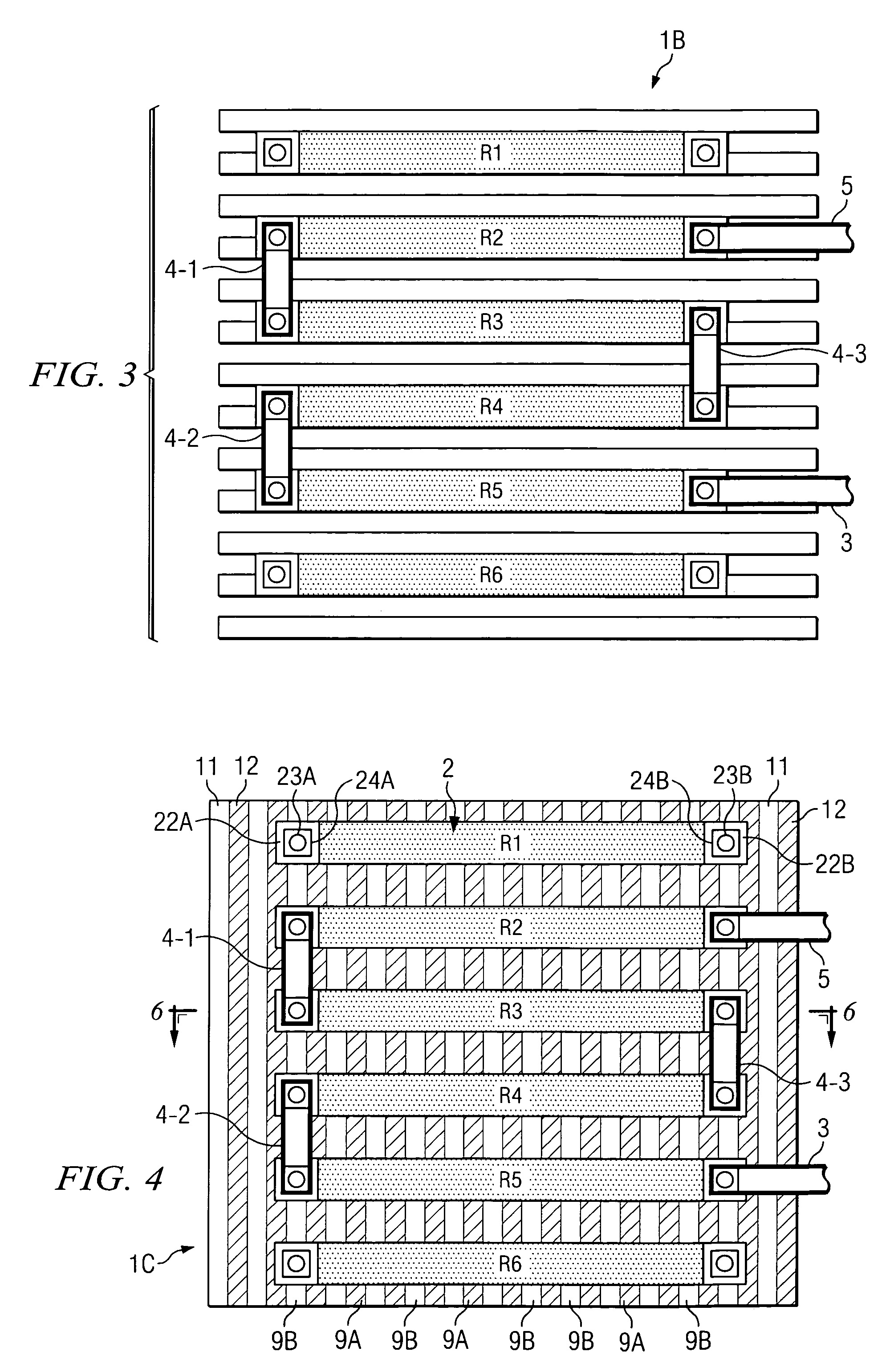Thin film resistor and dummy fill structure and method to improve stability and reduce self-heating
a thin film resistor and filling structure technology, applied in the direction of resistor details, semiconductor/solid-state device details, etc., can solve the problems of insufficient removal of undesired metallization residues, inability to meet many conventional integrated circuit processing steps, and inability to meet the requirements of non-planar surfaces, etc., to reduce the thermal resistance of silicon substrates, improve the structure of thin film resistors, and reduce the cost of integrated circuits.
- Summary
- Abstract
- Description
- Claims
- Application Information
AI Technical Summary
Benefits of technology
Problems solved by technology
Method used
Image
Examples
Embodiment Construction
[0024]FIG. 1 shows a plan view of an integrated circuit resistor structure 1 including elongated, rectangular resistive film segments or resistors R1,2 . . . 6 composed of thin film material such as SiCr (sichrome). The segments R1,2 . . . 6 all are essentially identical in length, width, and spacing between the segments. A metal terminal 5 is connected through a tungsten via or plug 23 to a thin film resistor “head”24 of thin film resistor segment R2. Thin film resistor head 24 typically is composed of TiN (titanium-nitride). The left end of resistor segment R2 is connected in the same manner to one end of a metal connector 4-1, the other end of which is connected through a tungsten plug and a TiN head to the left end of resistor segment R3, the right end of which is connected by metal connector 4-3 to the right end of resistor segment R4. Similarly, segments R4 and R5 are connected in series with segments R3 and R4 and with terminals 3 and 5 to form a “composite” thin film resisto...
PUM
 Login to View More
Login to View More Abstract
Description
Claims
Application Information
 Login to View More
Login to View More - R&D
- Intellectual Property
- Life Sciences
- Materials
- Tech Scout
- Unparalleled Data Quality
- Higher Quality Content
- 60% Fewer Hallucinations
Browse by: Latest US Patents, China's latest patents, Technical Efficacy Thesaurus, Application Domain, Technology Topic, Popular Technical Reports.
© 2025 PatSnap. All rights reserved.Legal|Privacy policy|Modern Slavery Act Transparency Statement|Sitemap|About US| Contact US: help@patsnap.com



